1. Organizations as holographic brains
1.1. The brain is both holographic and specialized
1.2. Increasing uncertainty results in desire to control outputs as opposed to behavior
1.2.1. negative feedback loops
1.3. Single & double loop learning (challenging operating norms)
1.3.1. First loop is needed, but don't want to get stuck in it
1.4. What type of environment is needed to allow the challenging of operating norms?
1.4.1. Culture of openness; people feel safe to dialogue
1.4.2. Top-down approach typically doesn't work for this outcome
1.4.3. Listening - if upper management listens, they will hear both problems and solutions -- access the knowledge that's already there
1.4.4. Teach people how to listen
1.4.4.1. e.g. Ed's safety culture
2. Building holographic qualities in organizations
2.1. Build the whole into the parts
2.1.1. Incorporate values, build corporate DNA
2.2. Importance of redundancy
2.2.1. In information processing/flow
2.2.2. In skills and design of work
2.3. Requisite variety
2.3.1. Internal complexity must match that of environment
2.4. Minimum specs
2.4.1. Define no more than absolutely necessary
2.5. Learn to learn
2.5.1. Scan & anticipate environmental change
2.5.2. Emergent design
3. Limitations
3.1. There is no coherent image of the brain shared by all, so we use sub-metaphors like holograms
3.2. Blind spots
3.2.1. Conflicts between learning and self-organization
3.2.2. Dynamics of power and control react against self-organization
3.3. Continuous learning must be accompanied by appropriate societal purpose or it may be in service to negative outcomes
4. Strengths
4.1. Identifies the requirements of learning organizations
4.2. Powerful way of thinking about info tech and how it can be used to support learning orgs
4.2.1. Self-organizing networks shaped and driven by collective intelligence
4.3. Invites rethinking industrial management principles
4.3.1. Leadership should be diffused, not centralized
4.3.2. Goals/objectives/targets should avoid pathologies of single loop learning
4.3.3. Hierarchy, design & strategic development should be understood as self-organizing, emergent phenomena
5. Leadership & Teams
5.1. Patterns emerge rather than being imposed
5.2. Requisite variety - put variety into the system where it's needed
5.3. Leaders need to move toward facilitation and boundary management
5.4. Leadership doesn't have to be institutionalized / pre-defined
5.5. Keep loose boundaries within functional areas
5.6. Grow large while staying small (holographic structures)
5.7. Holistic teams have diversified roles
5.7.1. Self-managing workgroups
5.7.2. Teams absorb functions
5.7.3. Remove bureaucratic structures
